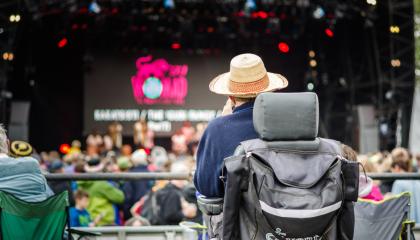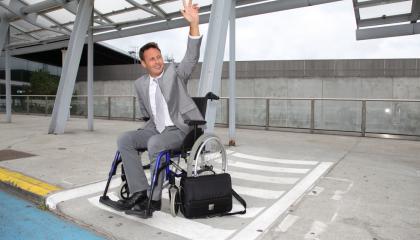A few weeks ago, we talked about the importance of ADA compliance for a temporary event. Meeting U.S. government standards for a public area can be challenging in general, but a temporary event that is open to the public provides its own hurdles to overcome. ADA compliance at a temporary event can be difficult, but compliance is worth the work to create a more accessible world.
Individuals with limb differences or amputations are often overlooked in our society today. While some choose to use a prosthetic, others don’t. Every experience is unique, from people who have had their limb differences since birth, to others who have had a limb amputation due to accident, injury, or disease.
A few weeks ago, we talked about the importance of ADA compliance for a temporary event. Meeting U.S. government standards for a public area can be challenging in general, but a temporary event that is open to the public provides its own hurdles to overcome. ADA compliance at a temporary event can be difficult, but compliance is worth the work to create a more accessible world.
The best applications for people who use wheelchairs often focus on making the world more accessible. Our society loves apps because of how easy they can make our lives, and these benefits are especially important to those who have mobility issues or use a wheelchair.
Vision loss can happen for a variety of reasons, causing the types of visual impairments to cover a wide spectrum. As a rule, visual impairment cannot be fixed simply by glasses or contact lenses. There are stages of vision loss. What we call blindness is when a visual impairment results in total or near-total vision loss.
For sidewalks and now websites, color ADA compliance ensures that people with low vision are able to see a clear contrast for viewing information. While the government requires a certain standard for public areas and websites, color ADA compliance is important for more reasons than just government conformity.
The etiquette of interacting with a wheelchair user is rather simple if we make it so. From an early age, we learn our society’s rules for interacting with one another; however, society doesn’t offer clear-cut standards for interacting with people who use wheelchairs. When meeting a person using a mobility device in public or social situations, some people might freeze up, act in a patronizing way, or ignore the person completely.
People are people—no matter what.
ADA compliance for temporary events is just as important as ADA compliance for public areas and private businesses. The Americans with Disabilities Act (ADA) prevents discrimination towards individuals with vision loss, hearing issues, and other disabilities. When it comes to accessibility, the ADA outlines certain standards to ensure that public areas, even temporary events, are accessible to people with impairments.
The Americans with Disabilities Act (ADA) expects workplaces and public areas to be accessible for people with disabilities. Since 1990, businesses and communities strive to meet these requirements. For example, public areas must take steps to remove barriers and add domed-tile curb ramps to improve accessibility and safety for people with impairments. Buildings constructed before 1990 must make adjustments, but buildings built after 1990 must be ADA compliant.
When the United States passed the Air Carrier Access Act (ACAA), it became illegal for airlines to discriminate against passengers who had an impairment. The law applies to any airline that provides air transportation to, from, or within the United States. Not only does this law cut down on discrimination, but it also requires airlines to provide assistance for passengers, such as a wheelchair, guided assistance for all areas of boarding, or seating accommodation.
Pagination
- Previous page
- Page 6
- Next page
Connect with us
We pride ourselves on our customer service, and we'd love to hear from you! Sign up for our newsletter to keep up with industry updates and trends, as well as any new product releases.












